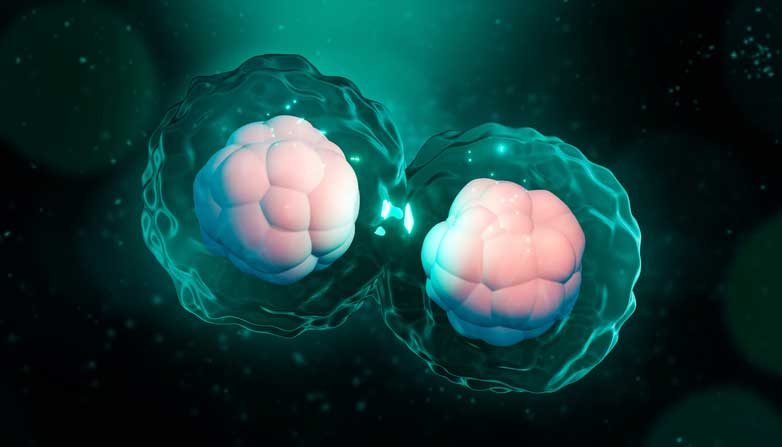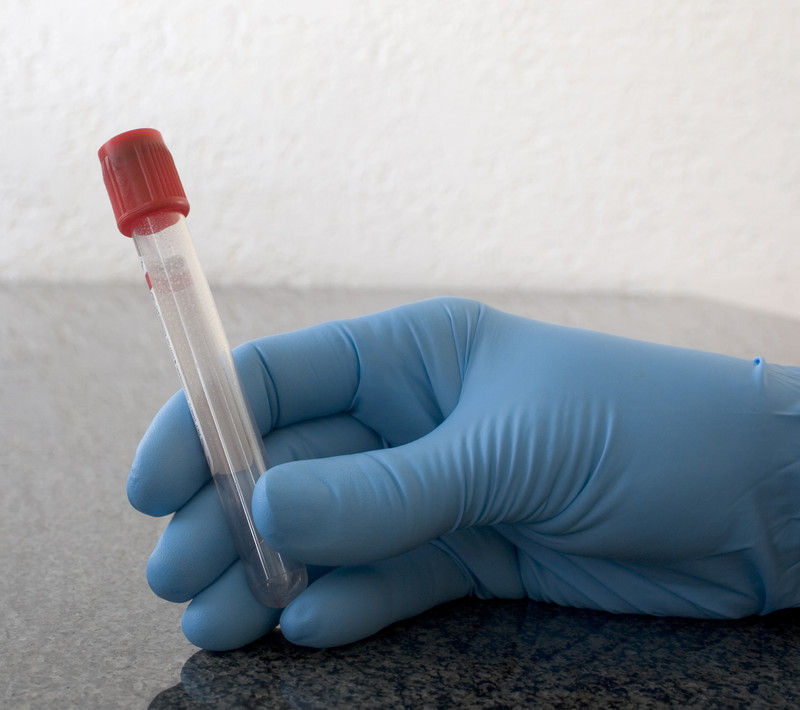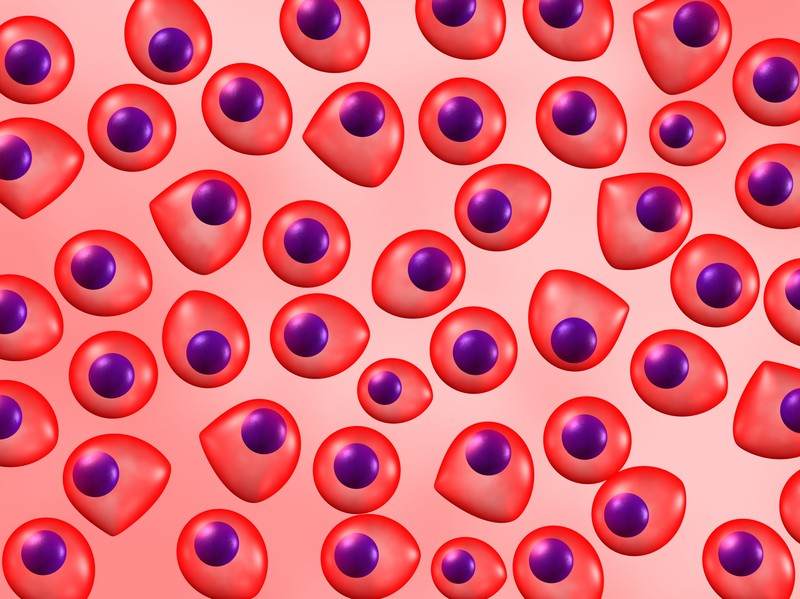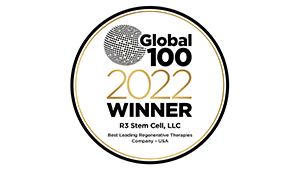Stem cells are found in amniotic fluid that is normally discarded after treatment or delivery.
Amniotic fluid stem cells are capable of becoming bone cells, fat cells, muscle cells, liver cells, and blood vessel cells.
Amniotic fluid stem cells are used 100,000 times in the United States with no adverse events reported.
The amniotic fluid is donated from consenting donors following a scheduled cesarean section. The fetus is not harmed at all.
Amniotic fluid stem cells have an advantage over embryonic stem cells. The embryonic cells often form into tumors, whereas amniotic stem cells do not. Another advantage is that amniotic fluid can be obtained following delivery from donations. There are no ethical considerations, as the cells do not come from a developing fetus.
Scientists have successfully reprogrammed stem cells in amniotic fluid without introducing extra genes. Experts are investigating the possibility of storing stem cells from donated amniotic fluid in banks to use for research and therapies. Amniotic fluid surrounds them and nourishes the fetus in the womb. The fluid contains stem cells from the fetus, and these cells have the capacity to develop into different types of cells.
Once the stem cells are processed in the laboratory, they are administered to the patient much like a corticosteroid injection (steroid shot). The California stem cell doctor will administer the injection to the affected joint or body region. After the skin is cleaned, the needle is inserted into the treatment area.
The amniotic fluid stem cells contain anti-inflammatory properties that provide many benefits. Stem cell injections can restore some degenerated tissue and offer pain relief. They also contain hyaluronic acid, which lubricates tendons and joints, which restores mobility and decreases stiffness.
Amniotic fluid has many beneficial properties to promote tissue repair and regeneration. These include:
Amniotic fluid stem cells are used to treat:
Amniotic Derived Stem Cell Therapy In Los Angeles
FAQs on Amniotic Derived Stem Cell Therapy
Stem cells are found in amniotic fluid that is normally discarded after treatment or delivery.
Amniotic fluid stem cells are capable of becoming bone cells, fat cells, muscle cells, liver cells, and blood vessel cells.
Amniotic fluid stem cells are used 100,000 times in the United States with no adverse events reported.

Where does the amniotic fluid come from?
The amniotic fluid is donated from consenting donors following a scheduled cesarean section. The fetus is not harmed at all.
What is the difference between amniotic fluid stem cells and embryonic stem cells?
Amniotic fluid stem cells have an advantage over embryonic stem cells. The embryonic cells often form into tumors, whereas amniotic stem cells do not. Another advantage is that amniotic fluid can be obtained following delivery from donations. There are no ethical considerations, as the cells do not come from a developing fetus.
How does the amniotic fluid produce stem cells?
Scientists have successfully reprogrammed stem cells in amniotic fluid without introducing extra genes. Experts are investigating the possibility of storing stem cells from donated amniotic fluid in banks to use for research and therapies. Amniotic fluid surrounds them and nourishes the fetus in the womb. The fluid contains stem cells from the fetus, and these cells have the capacity to develop into different types of cells.

How are the amniotic stem cells administered to the patient?
Once the stem cells are processed in the laboratory, they are administered to the patient much like a corticosteroid injection (steroid shot). The California stem cell doctor will administer the injection to the affected joint or body region. After the skin is cleaned, the needle is inserted into the treatment area.
How do amniotic fluid stem cells work?
The amniotic fluid stem cells contain anti-inflammatory properties that provide many benefits. Stem cell injections can restore some degenerated tissue and offer pain relief. They also contain hyaluronic acid, which lubricates tendons and joints, which restores mobility and decreases stiffness.
What are the benefits of amniotic fluid derived stem cells?
Amniotic fluid has many beneficial properties to promote tissue repair and regeneration. These include:

What conditions are treated with amniotic membranes?
Amniotic fluid stem cells are used to treat:
Resources
Moschidou D, Mukherjee S, Blundell MP, et al. (2012). Valproic acid confers functional pluripotency to human amniotic fluid stem cells in a transgene-free approach. Molecular Therapy, DOI: 10.1038/mt.2012.117
Stem Cell and PRP Therapy Under an IRB Approved Protocol with TOP DOCS (310) 507-9464!
Call for your FREE Consultation.
R3 Stem Cell is a global leader in regenerative medicine, offering advanced stem cell and exosome therapies through Centers of Excellence in over 45 locations across 7 countries. Our mission is to provide first-rate, customized regenerative treatments, including stem cells, exosomes, PRP, vitamins, and peptides, to help patients achieve a better quality of life. With more than 26,000 procedures performed and an 85% patient satisfaction rate, our experienced, compassionate providers are committed to delivering safe, effective care. All therapies are nonsteroidal, outpatient procedures designed to harness the body’s natural repair mechanisms and support tissue regeneration. Individual results may vary, and only your medical professional can explain all the risks and potential benefits of any therapy based on your unique circumstances.
Stem cell therapy is considered experimental and is regulated by the U.S. Food and Drug Administration (FDA), but it is not FDA-approved. R3 Stem Cell does not offer stem cell therapy as a cure for any medical condition. No statements made on this site have been evaluated or approved by the FDA. This site does not provide medical advice. All content is for informational purposes only and is not a substitute for professional medical consultation, diagnosis, or treatment. Reliance on any information provided by R3 Stem Cell, its employees, others appearing on this website at the invitation of R3 Stem Cell, or other visitors to the website is solely at your own risk. R3 Stem Cell does not recommend or endorse any specific tests, products, procedures, opinions, or other information that may be mentioned on this website. R3 Stem Cell is not responsible for the outcome of your procedure. The FDA considers stem cell therapy experimental at this point.






R3 Stem Cell is not offering stem cell therapy as a cure for any medical condition. No statements or treatments on this site have been evaluated or approved by the FDA. This site contains no medical advice. All statements and opinions on this site are provided for educational and informational purposes only.
Copyright © 2016 – 2023 R3 Stem Cell
Queries are responded to in the order received, during normal business hours. We look forward to confirming your FREE consultation shortly!